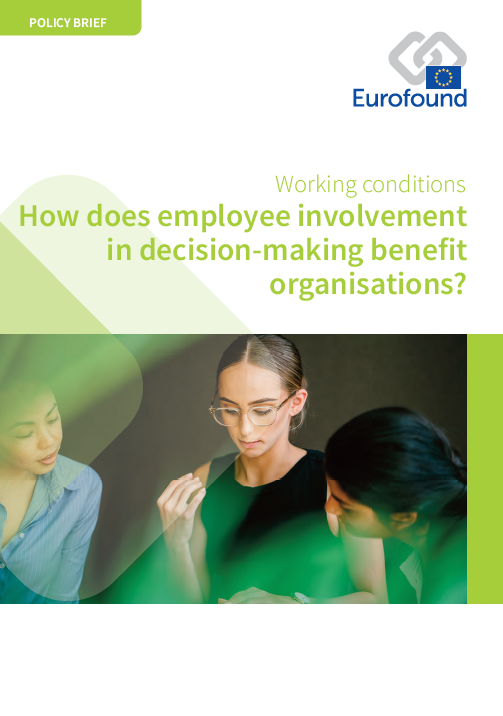How do organisations get the best out of their employees? Research on human resource management has found that a key practice is employee involvement: enabling employees to make decisions on their own work and to contribute to organisational decision-making. A high degree of employee involvement creates work environments that are highly motivational and that emphasise skill development. And this is the type of work environment that organisations need to meet the demands for innovation and adaptability to technological change in a knowledge-driven economy. This policy brief examines the empirical evidence that workplaces where employee involvement is high are more successful in developing the capacity for high performance in workers than workplaces with lower levels of involvement. It examines the influence of work organisation on two factors contributing to performance: work engagement and skill development.
Key findings
In total, 29% of employees in the EU, Norway and the United Kingdom work in forms of work organisation that provide a high level of employee involvement – meaning that employees are able to exercise their own initiative in carrying out tasks and have substantial input, either individually or collectively, in decisions that affect the wider organisation.
Nearly half of employees (47%) working in a high-involvement organisation report a high level of work engagement, almost double the share working in low-involvement organisations (24%). Highly engaged employees demonstrate a more positive orientation towards their work. They are less often absent from work, more likely to put in extra effort, prefer a later retirement age, and report higher levels of well-being.
High-involvement organisation provides more opportunity for both formal and informal skill development, but it is particularly strongly associated with informal skill development. This finding implies that high involvement is most likely to promote the practical expertise that underpins innovative thinking and to increase the capacity of organisations to adapt to changing technological and market environments.
High-involvement organisation has a levelling effect with respect to skill development. Differences in opportunities for skill development between high-skilled and lower-skilled employees are lower in high-involvement organisations.
These findings together suggest that it is particularly important to raise the decision-making latitude of less-skilled workers if employers are to optimise the performance of their workforce as a whole.
Graphs
- Figure 1: Types of work organisation and the proportion of employees who work in each, EU, Norway and the UK, 2015
- Figure 2: Percentage of employees in high- and low-involvement organisations, EU, Norway and the UK, 2015
- Figure 3: Levels of work intensity reported by employees in four organisation types (%)
- Figure 4: Levels of managerial fairness and supportiveness reported by employees in four organisation types (%)
- Figure 5: Levels of work engagement reported by employees in four organisation types (%)
- Figure 6: Effect of high involvement on work engagement by occupational category
- Figure 7: Employee scores on formal and informal skill development indices, by sector
- Figure 8: Employee scores on formal and informal skill development indices, by organisation type
- Figure 9: Factors accounting for occupational differences in informal skill development
- Number of pages
-
24
- Reference nº
-
EF19006
- ISBN
-
978-92-897-2084-7
- Catalogue nº
-
TJ-AR-20-003-EN-N
- DOI
-
10.2806/985657
- Permalink
Cite this publication
Eurofound (2020), How does employee involvement in decision-making benefit organisations?, European Working Conditions Survey 2015 series, Publications Office of the European Union, Luxembourg.

